Canada Slim and the Bittersweet Stone Town
Landschlacht, Switzerland, Saturday 30 January 2021
This is a evening for Saudade, for Fado music, when the bittersweet memory of something or someone is intermingled uncertainly with the desire to recapture that moment ne’er forgotten.

It is the anniversary of the executions of Charles I (1649) and Oliver Cromwell (1661) who replaced him.
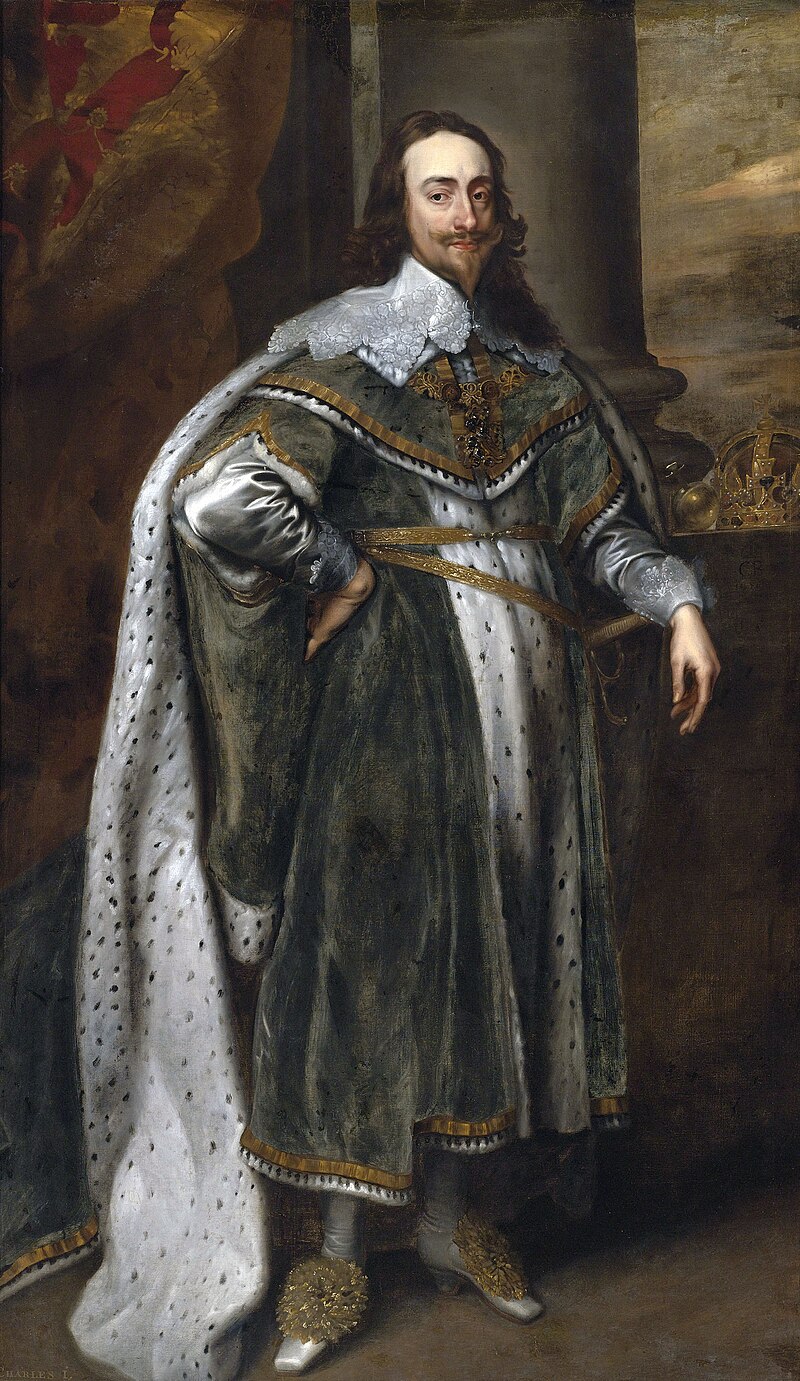
Above: Charles I (1600 – 1649)

Above: Oliver Cromwell (1599 – 1658)
It is the anniversary of the revenge of the 47 Ronin (1703) and the attempted assassination of US President Andrew Jackson (1835).

Above: Revenge of the Loyal Samurai of Akō, by Yasuda Raishū, Homma Museum of Art, Sakata, Yamagata, Japan
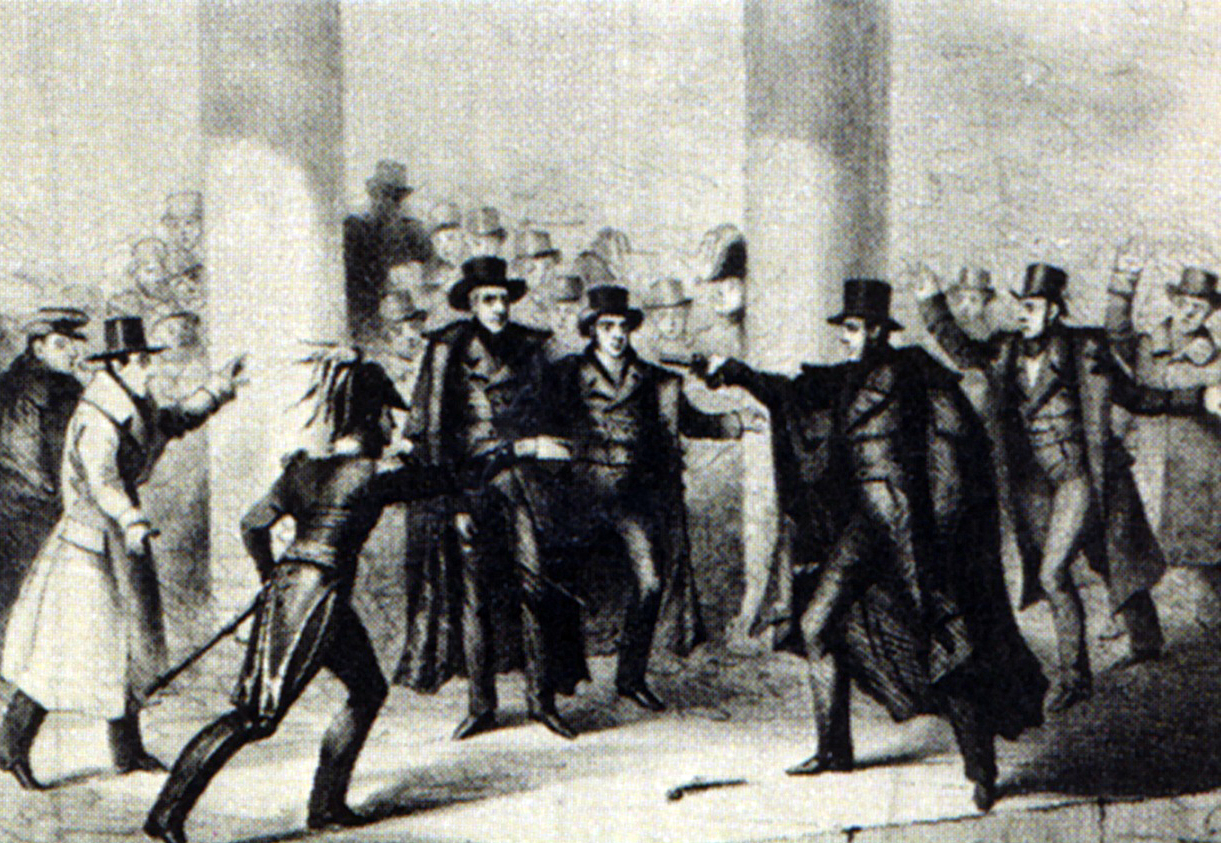
Above: The etching of the 30 January 1835 assassination attempt by Richard Lawrence (1800 – 1861) against Andrew Jackson (1767 – 1845)
It is the anniversary of Adolf Hitler (1889 – 1945) becoming Chancellor (1933) and the sinking of the Wilhelm Gustloff by Soviet torpedo resulting in the deaths of 9,500, many of them German refugees. (1945)

Above: Adolf Hitler addressing the Reichstag on 23 March 1933

Above: the MV Wilhelm Gustloff (1937 – 1945)
On this day Mahatma Gandhi is assassinated (1948) and Martin Luther King Jr.’s home is bombed for organizing the Montgomery bus boycott (1956).

Above: Mahatma Gandhi (1869 – 1948)
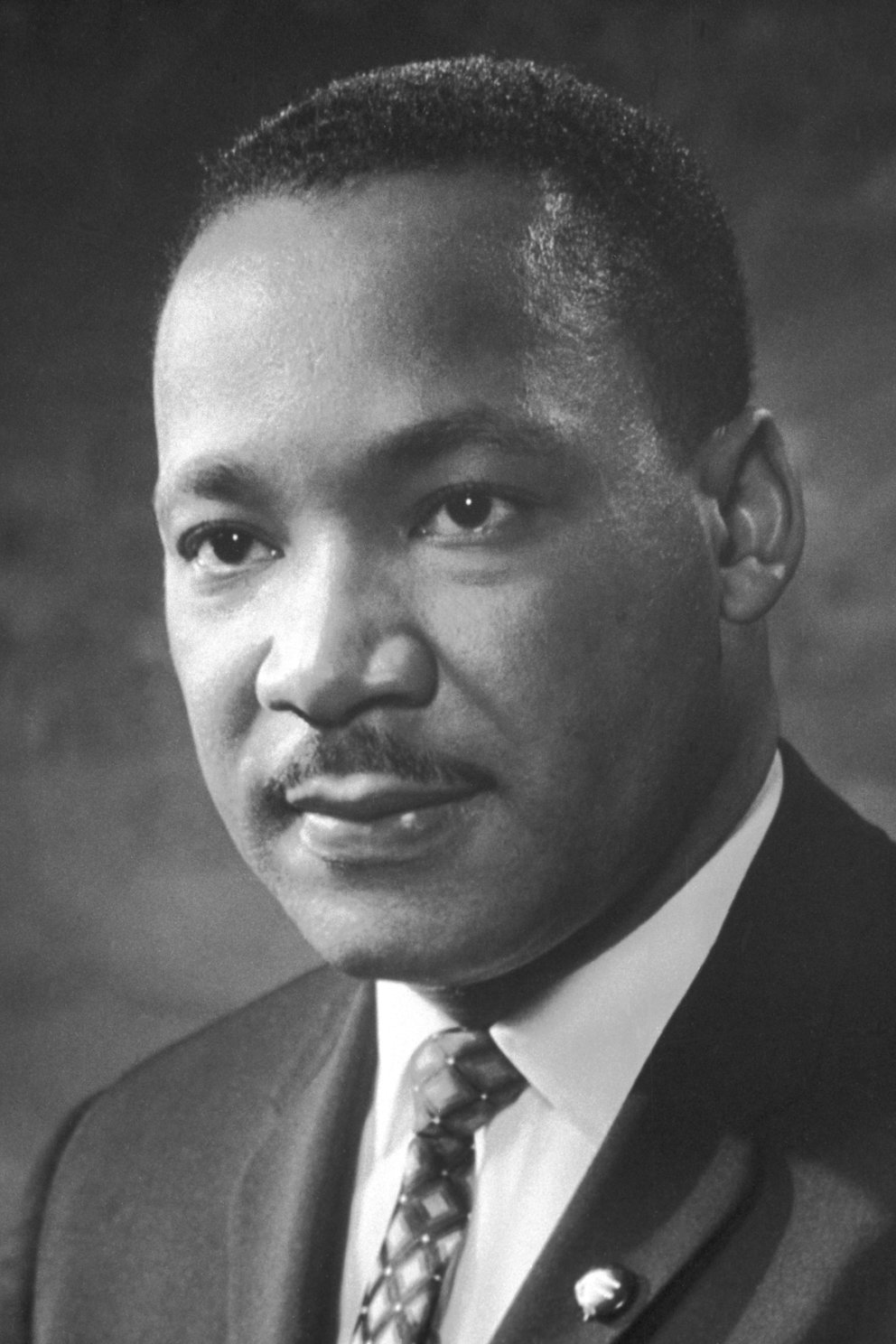
Above: Dr. Martin Luther King Jr. (1929 – 1968)
On this day the Tet Offensive is launched (1968) and the Beatles perform their last public concert from the London rooftop of Apple Records (1969).

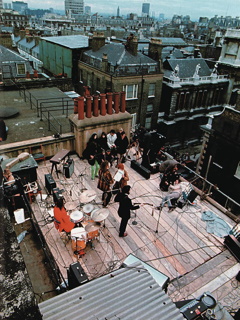
Above: The Beatles’ rooftop concert, 3 Savile Row, London, 30 January 1969
In 1972, it is Sunday, Bloody Sunday, as British troops fire on unarmed protesters in the Northern Ireland town of Derry, resulting in 14 dead.

Above: Father Edward Daly, waving a blood-stained white handkerchief as he escorts a mortally-wounded protester to safety during Bloody Sunday
I can’t believe the news today
Oh, I can’t close my eyes and make it go away
How long, how long must we sing this song?
How long? How long?
‘Cause tonight
We can be as one
Tonight
Broken bottles under children’s feet
Bodies strewn across the dead-end street
But I won’t heed the battle call
It puts my back up, puts my back up against the wall
Sunday, Bloody Sunday
Sunday, Bloody Sunday
Sunday, Bloody Sunday
Sunday, Bloody Sunday
Alright, let’s go
And the battle’s just begun
There’s many lost, but tell me who has won?
The trenches dug within our hearts
And mothers, children, brothers, sisters torn apart
Sunday, Bloody Sunday
Sunday, Bloody Sunday
How long, how long must we sing this song?
How long? How long?
‘Cause tonight we can be as one, tonight
Tonight, tonight (Sunday, Bloody Sunday)
Tonight, tonight (Sunday, Bloody Sunday)
Alright, let’s go
Wipe the tears from your eyes
Wipe your tears away
I’ll wipe your tears away
I’ll wipe your tears away (Sunday, Bloody Sunday)
I’ll wipe your bloodshot eyes (Sunday, Bloody Sunday)
Sunday, Bloody Sunday
Sunday, Bloody Sunday
Sunday, Bloody Sunday
Sunday, Bloody Sunday
And it’s true we are immune
When fact is fiction and TV reality
And today the millions cry (Sunday, Bloody Sunday)
We eat and drink while tomorrow they die (Sunday, Bloody Sunday)
The real battle just begun (Sunday, Bloody Sunday)
To claim the victory Jesus won (Sunday, Bloody Sunday)
On Sunday, Bloody Sunday, yeah
Sunday, Bloody Sunday

Above: Mural by the Bogside Artists depicting all who were killed by the British Army on the day
It is the start of the Season for Nonviolence, established in 1998 by Arun Gandhi, Mohandas Gandhi’s grandson, as a yearly event celebrating the philosophies and lives of Mahatma Gandhi and Martin Luther King Jr.
The “season” begins with the anniversary of the assassination of Mahatma Gandhi on 30 January 30, ending on the 4 April anniversary of the assassination of King and is anchored by a mission, statement of principles, and commitments by participants towards living in a nonviolent way.

In Brazil, it is Saudade, for Brazilians instinctively know that life is of itself bittersweet and only Fado truly captures that emotion.
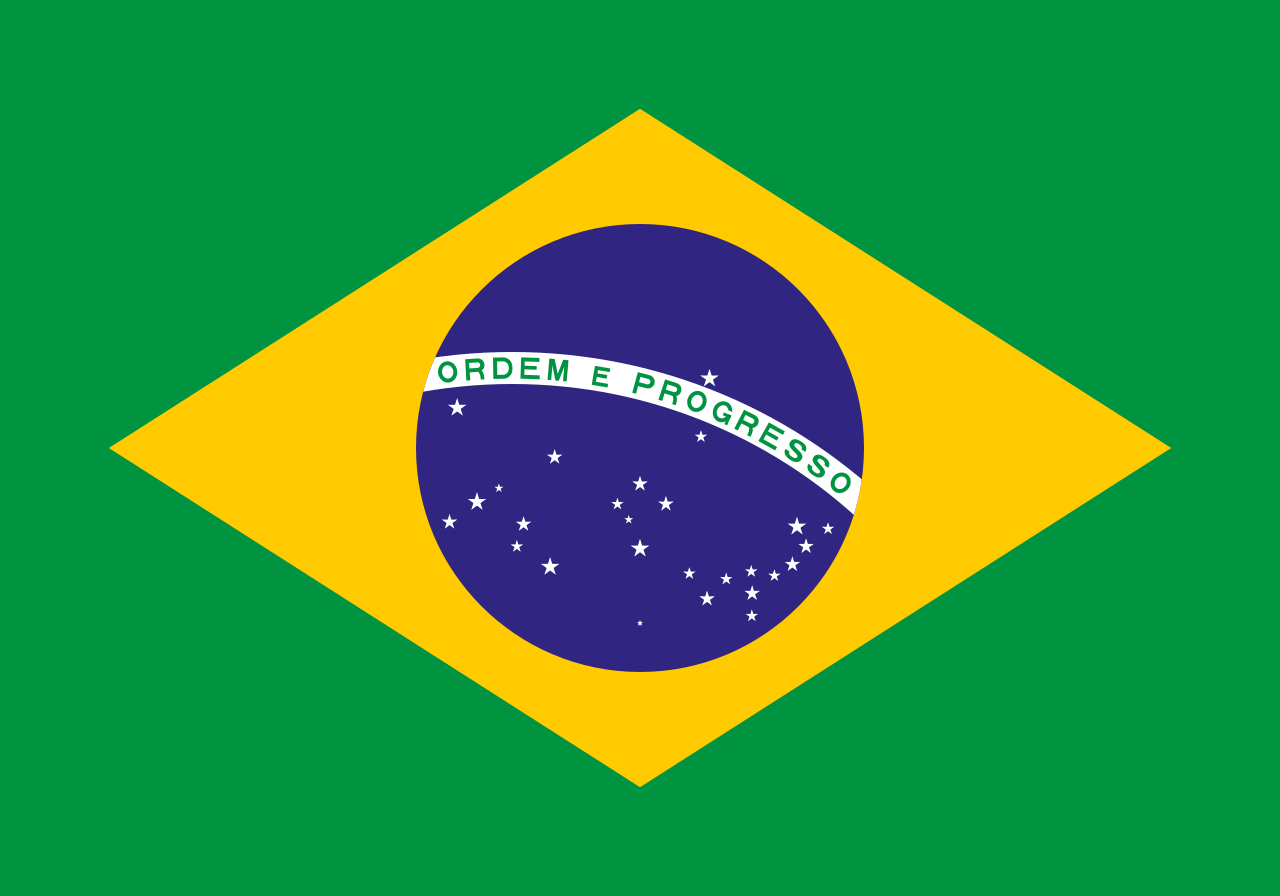
Above: Flag of Brazil
Who showed this way far?
Quem mostrava esse caminho longe?
Who showed this way far?
Quem mostrava esse caminho longe?
This path to São Tomé
Esse caminho pa São Tomé
Who showed this way far?
Quem mostrava esse caminho longe?
Who showed this way far?
Quem mostrava esse caminho longe?
This path to São Tomé
Esse caminho pa São Tomé
Sodade, sodade
Sodade, sodade
Sodade of my land, São Nicolau
Sodade dessa minha terra, São Nicolau
Sodade, sodade
Sodade, sodade
Sodade of my land, São Nicolau
Sodade dessa minha terra, São Nicolau
Who showed this way far?
Quem mostrava esse caminho longe?
Who showed this way far?
Quem mostrava esse caminho longe?
This way to São Tomé
Esse caminho pra São Tomé
Who showed this way far?
Quem mostrava esse caminho longe?
Who showed this way far?
Quem mostrava esse caminho longe?
This way to São Tomé
Esse caminho pra São Tomé
Sodade, sodade
Sodade, sodade
Sodade of my land, São Nicolau
Sodade dessa minha terra, São Nicolau
Sodade, sodade
Sodade, sodade
Sodade of my land, São Nicolau
Sodade dessa minha terra, São Nicolau
If I’m going to write a lot to write
Se vou escrever muito a escrever
If I’ll forget too much to forget
Se vou esquecer muito a esquecer
Until the day I return
Até dia que vou voltar
If I’m going to write a lot to write
Se vou escrever muito a escrever
If I’ll forget too much to forget
Se vou esquecer muito a esquecer
Until the day I return
Até dia que vou voltar
Sodade, sodade
Sodade, sodade
Sodade of my land, São Nicolau
Sodade dessa minha terra, São Nicolau
Sodade sodade
Sodade sodade
Sodade of my land, São Nicolau
Sodade dessa minha terra, São Nicolau
YouTube is played again and again as I am deeply moved by the haunting tones of Cesaria Evora.

Above: “the Barefoot Diva” Cesaria Evora (1941 – 2011)
A voice laden with love and longing speaks in words that need no translating, of the unspoken soul within, of a heart that beats even if it is ignored.

It is Weltschmerz (the pain of the world), it is Heimweh (homesickness) combined with Fernweh (the desire to be in a place you have never been before).
And in a way Heimweh is Fernweh, for Home as you remember it, will never be the home to which you return.
It is the empty apartment where you used to live.
It is a photograph of someone now silent.
It is the unspoken admission of failure of a couple who have run out of words to express themselves.
It is an empty room with a dustladen guitar abandoned by a poet for whom music has turned cruel.
It is the child you are forbidden to comfort and the dog you cannot save from the harshness of age.
It is unrequited love and unexpected tragedy.
It is the dying of life and the living with death.
Such is Fado, such is Saudade, such is Life.
It is evening where wishes turn to winebars denied by a pandemic and thoughts are far far away….
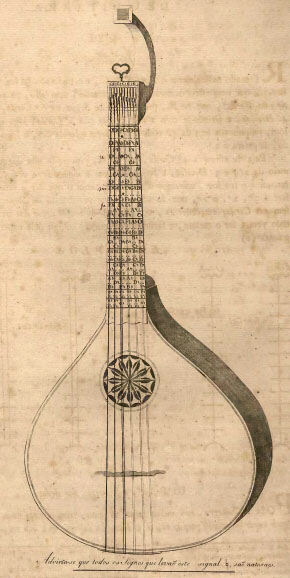
London, Ontario to Winnipeg, Manitoba, Monday 13 January 2020
Now all of the planes have landed
And the soldiers are in their beds
Smoke rises from their clothing
And sweet dreams through their heads
Truth faced leaves a strange taste
When joy and sadness meet
A country rain on a city street
This life is bittersweet
The boy with the bloated belly
Hears today’s trucks arrive
He puts down his baby sister
And makes his way outside
Truth faced leaves a strange taste
When joy and sadness meet
A country rain on a city street
This life is bittersweet
Everyone’s a novelist
And everyone can sing
But no one talks when the TV’s on…
Sweet dreams fill their heads…
The lightning flashed and the thunder rolled
And dark clouds filled the sky
A country rain on a city street
This life is bittersweet

Back on a train, London to Toronto, my last day in Ontario, nine days before I return to Switzerland, I have said goodbye to family and friends in Lachute, Montréal, Ottawa, Napanee, Brampton and St. Thomas, and as much as I look forward to seeing friends in Manitoba and Alberta, my poor heart feels battered by the pleasure of reunion and the pain of departure.
It is the prospect of a day in Winnipeg and three nights in Edmonton, of being a stranger amongst strangers, of being merely a traveller that I find myself looking forward to, living without the constant surface reminder of the past, seeing a place fresh and unaffected by the dust clouds of yesteryear.
But first I must traverse the distance between London station and Toronto airport with a number of stops worth considering….

At the junction of the north branch of the Thames River and Trout Creek southwest of Stratford, and surrounded by the Township of Perth South in Perth County, St. Marys operates under its own municipal government that is independent from the County’s government.
Nonetheless, the three entities “enjoy a large degree of collaboration and work together to grow the region as a leading location for industry and people“.
The town is also known by its nickname, “the Stone Town“, due to the abundance of limestone in the surrounding area, giving rise to numerous limestone buildings and homes throughout the town.

St. Marys Cement, a large cement producer founded in the town, capitalized on this close feed stock, and grew to be a major producer of cement in the province of Ontario.
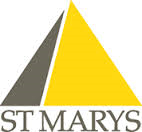
In 1839, the Canada Company (1825 – 1953) sent a surveyor to Blanshard Township in the Huron Tract to choose a site for a town on the Thames River which would later be named St. Marys.

Above: Coat of arms of the Canada Company
The first settlers arrived at the junction of the Thames River and Trout Creek, southwest of Stratford in the early 1840s, attracted by the area’s natural resources.
At the new town site, the Thames River cascaded over a series of limestone ledges, providing the power to run the first pioneer mills and giving the community an early nickname: Little Falls.

Above: Little Falls, St. Marys
The Smith’s Canadian Gazetteer of 1846 describes the settlement as follows:
It was laid out in 1844 and contains about 120 inhabitants.
There is an excellent limestone quarry close to the village.
Professions and trades: One grist mill, one saw mill, one physician and surgeon, two asheries, three stores, one tavern, one shoemaker, one tailor, one cooper, one blacksmith.
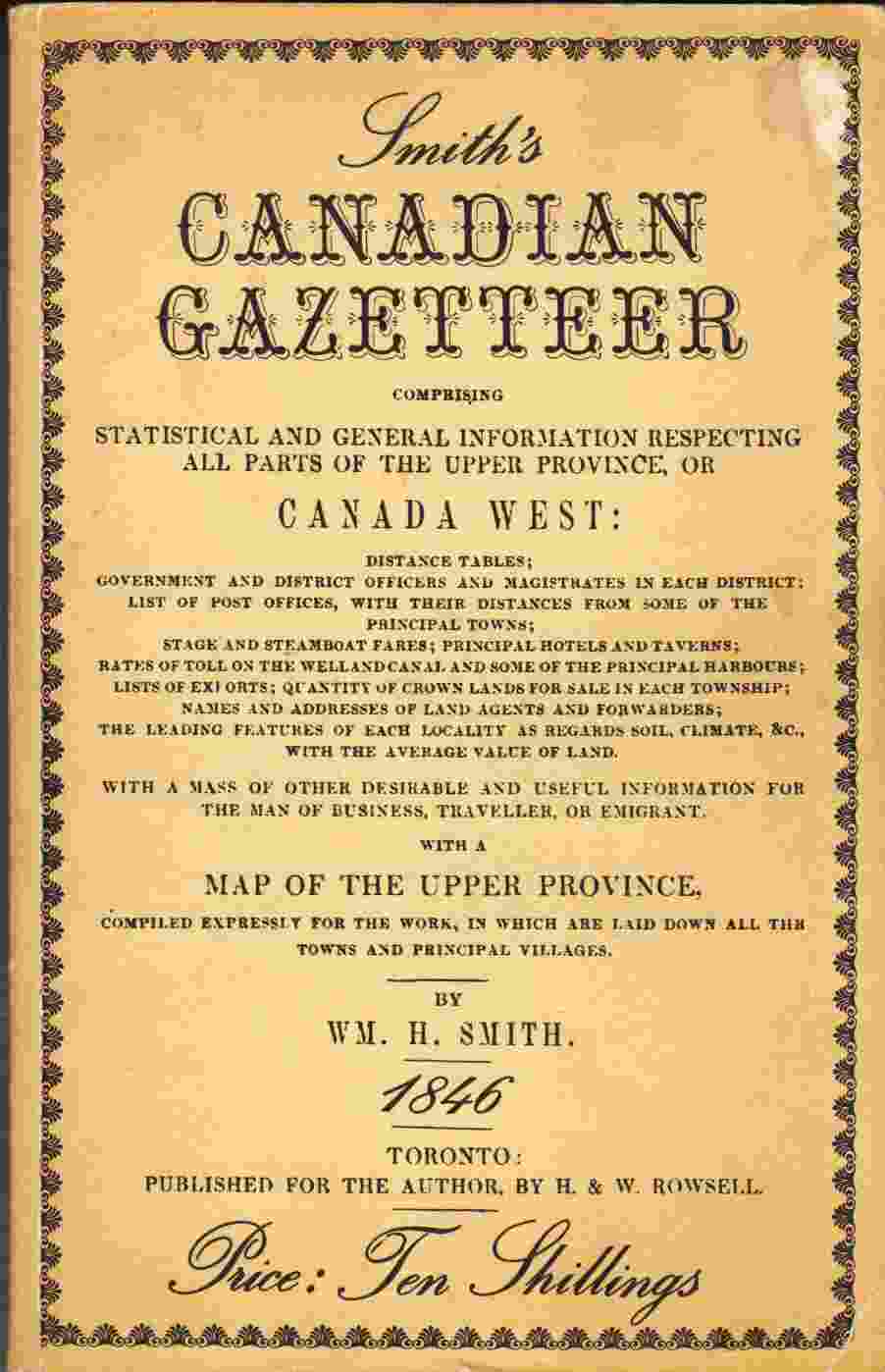
The arrival of the Grand Trunk Railway in the late 1850s increased the growth.

The community became a centre for milling, grain-trading and the manufacture of agriculture-related products.
In 1854 the community was incorporated as a village and in 1863 as a town.
However, it did not incorporate itself into Perth County.
In the riverbed and along the banks, limestone was close to the surface and could be quarried for building materials.
Many 19th century limestone structures survive: churches, commercial blocks, and private homes.
They have given St. Marys its current nickname: Stonetown.

A plaque erected by the Government of Ontario provides additional details about the early days:
When opening Blanshard Township for settlement in 1839, the Canada Company made an arrangement with Thomas Ingersoll, a brother of Laura Secord, to build mills at “the Little Falls” (500 feet wide) of the Thames.
In 1841 – 1843, he erected a sawmill and a grist-mill and in return obtained 337 acres of land in this vicinity.
The mills formed the nucleus of a settlement named St. Marys.
The building of railways, 1857 – 1860, stimulated development and in 1864, when St. Marys became a town, it was already the centre of lumber and limestone quarry industries and the adjacent prosperous agricultural region.

The first library was opened in 1857.
It belonged to the local Mechanics Institute, but had no permanent home and had to rent space where it could.
In 1904, the Andrew Carnegie Foundation provided $10,000 for the construction of a library building.
It was built and opened on 17 August 1905.
By 1913, the shelves contained 4,000 books.
Major renovations were completed in 1988 including the addition of a new wing.

In 1908, a handle and hockey stick company was founded by Solen Doolittle in the town of St. Marys called the St. Marys Wood Specialty Company.
Located on James Street in St. Marys from the early 1900s, it moved to Hespeler (ON) in 1933.
During their time in St. Marys the company made many such items as hammer handles, hockey sticks and baseball bats.
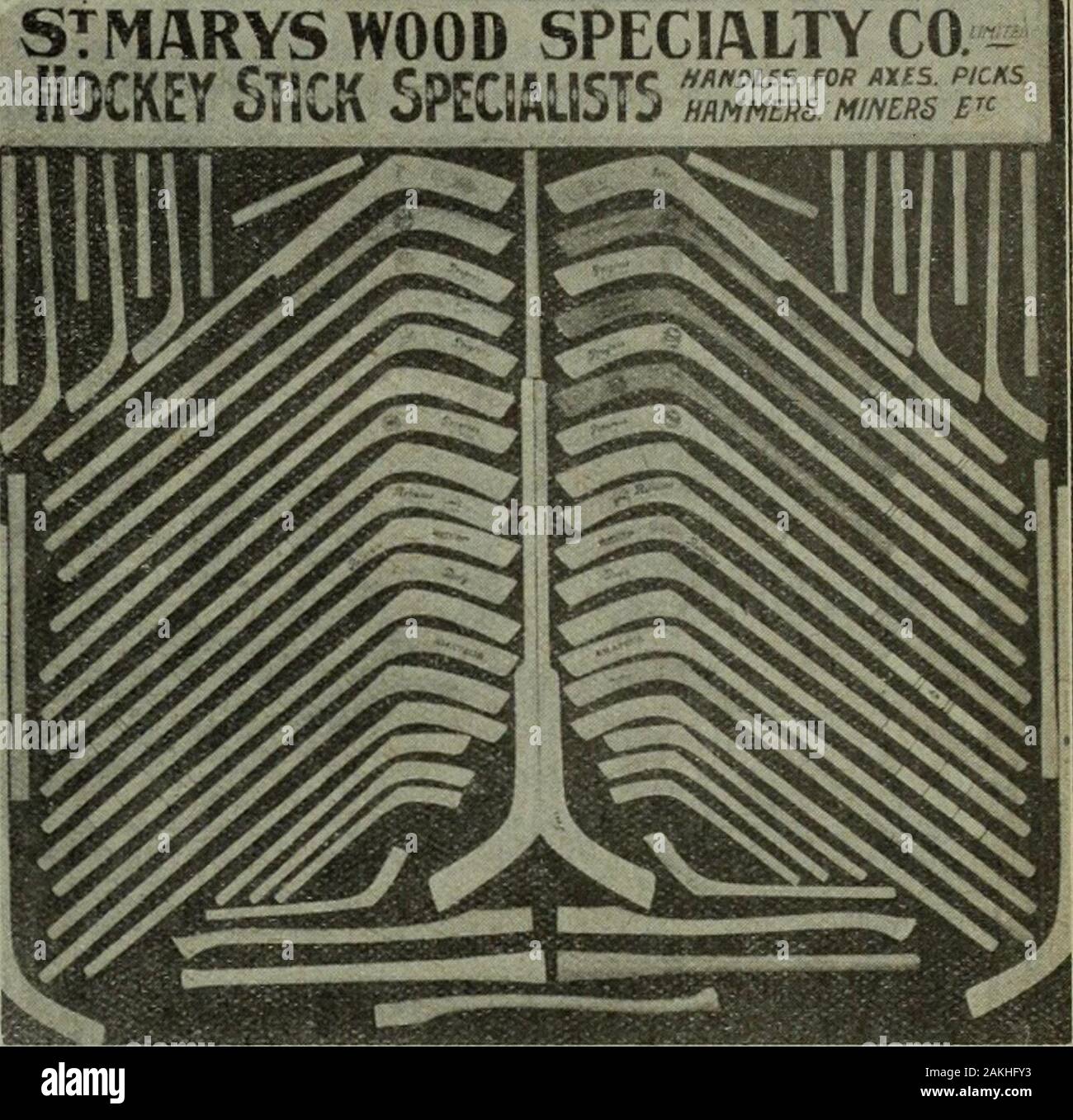
After many ownership changes over the years, by 1988 the now-Cooper bat had risen to #2 in the National Baseball League after the Louisville Slugger.
This success subsequently inspired the town to bid for the Canadian Baseball Hall of Fame.

Baseball is popular in North America and parts of Central and South America, the Caribbean, and East Asia, particularly in Japan, South Korea and Taiwan.

In the United States and Canada, professional Major League Baseball (MLB) teams are divided into the National League (NL) and American League (AL), each with three divisions: East, West, and Central.
The MLB champion is determined by playoffs that culminate in the World Series.

The top level of play is similarly split in Japan between the Central and Pacific Leagues and in Cuba between the West League and the East League.

The World Baseball Classic is the major international competition of the sport and attracts the top national teams from around the world.

Baseball in Canada dates back to the 19th century, and is played at various levels of competition throughout the country.

There is currently one major league team, the Toronto Blue Jays, founded in 1977.

Canada’s first major league team, the Montréal Expos, formed in 1969, relocated to Washington DC in 2005.

Around 75 Canadian cities and towns have been home to minor league baseball teams.
There is currently one MLB-affiliated minor league team, the Vancouver Canadians of the Class A Northwest League, an affiliate of the Blue Jays.
There are also several independent league teams in Canada, playing in the Frontier League and the American Association.


Notable amateur leagues include the Intercounty Baseball League (Ontario), Ligue de Baseball Majeur du Québec and the collegiate Western Canadian Baseball League (Alberta and Saskatchewan).


There are additionally amateur-level baseball teams playing in each province in the summer months under the auspices of Baseball Canada.
Several American-based collegiate leagues have teams in Canada.

Adapted from the British game of rounders — and by extension, cricket — the game of baseball (or “townball” became popular in the early 19th century in southwestern Ontario, New York and New England.

Above: Game of rounders on Christmas Day at Baroona, Glamorgan Vale, 1913.

The first documented evidence of a baseball game in Canada comes from a letter published in Sporting Life magazine in 1886, a letter by Dr. Adam E. Ford of Denver (CO), formerly of St. Marys and Beachville (ON) about a game 48 years earlier in Beachville on 4 June 1838 — Militia Muster Day.

Many Canadians, including the staff of the Canadian Baseball Hall of Fame and Museum in St. Marys, Ontario, claim that this was the first documented game of modern baseball, although there appears to be no evidence that the rules used in this game were codified and adopted in other regions.
Originally, the rules of the game were informal in nature and often modified to reflect regional preferences.

In Ontario, a variant of baseball known as “the Canadian Game” was most prevalent.
It featured five bases, bats that resembled those used in cricket or rounders and eleven players per team.
All eleven players went to bat each inning, which would not end until they were all retired.
The American variant of baseball had nine players a side instead of eleven, and four bases instead of five.
Southwestern Ontario was the first region in Canada to adopt this version of the game, in 1860, but the “Canadian Game” soon fell out of favour.

The London Tecumsehs of London (ON) were charter members of the International Association and won its first championship in 1877, beating the Pittsburgh Alleghenies.
Rather than competing nationally in an east-west fashion, local baseball clubs would instead compete with their American neighbours to the south.
This meant that teams from the Martimes played teams from New England, teams from Québec played against teams from New York and teams from British Columbia competed with those from Washington State.

The first Canadian to appear in a Major League game was Bill Phillips, who played for Cleveland.
In his first game on 1 May 1879, the Saint John, New Brunswick native went hitless, although managed to get three hits the next game.
In his second season, in 1880, he became the first Canadian to hit a home run in the Majors.

Above: “Silver Bill” Phillips (1857 – 1900)
By the 1880s black Canadians were barred from playing in white professional leagues, but Emancipation Day black vs white matches provided an opportunity for black teams to shine, such as when the Northern Stars trounced a white team in Edmonton.
Blacks played against Whites, but there were no teams mixed with players of both races:
“In the afternoon a baseball match in which the local colored nine, the Northern Stars, swamped a picked team of white players caused many a dusky son to show his ivory.
It provided a venue where Blacks could laugh at Whites and shout out comments without any fear of racial reprisal.”

By 1913, there were 24 minor league baseball teams in Canada, a number which has been unequalled since.
Babe Ruth hit his first professional home run on Canadian soil on 5 September 1914 at the former Hanlan’s Point Stadium on Centre Island in Toronto.
Ruth was playing for the Providence Grays against the Toronto Maple Leafs baseball team of the International League.
In 1985, the City of Toronto erected a small plaque to denote the location, but it is difficult to locate, given the parklike setting and remote nature of the Toronto Islands.

Above: Babe Ruth (1895 – 1948)
In 1946, Brooklyn Dodgers general manager Branch Rickey assigned Jackie Robinson to the Montréal Royals of the International League, Brooklyn’s Triple-A farm team.
Robinson would famously go on to break Major League Baseball’s colour barrier the following year in 1947, but during his season in Montréal Robinson led the Royals to the Governors’ Cup, the IL championship, and became a beloved figure in the city.
In Ken Burns’ documentary film Baseball, the narrator quotes Sam Maltin, a stringer for the Pittsburgh Courier:
“It was probably the only day in history that a black man ran from a white mob with love instead of lynching on its mind.”

Above: Jackie Robinson (1919 – 1972)
Following Robinson’s breaching of the colour barrier, in the 1950s many other players from the declining Negro leagues travelled north to ply their trade in Canada, including Hall of Famers Leon Day, Satchel Paige and Willie Wells, who like many other African-American players competed in the Mandak League.

Above: Leon Day (1916 – 1995)

Above: Satchel Paige (1906 – 1982)
Above: Willie “the Devil” Wells (1906 – 1989)
In 1957, former Cincinnati Reds and Philadelphia Phillies outfielder Glen Gorbous, a native of Drumheller, Alberta set the current world record for longest throw of a baseball at 445 feet, 10 inches (135.89m) in Omaha, Nebraska.

Above: Glen Gorbous (1930 – 1990)
The first Canadian in the National Baseball Hall of Fame (Cooperstown, NY) was Ferguson Jenkins, a right-handed pitcher who compiled a 284-226 record, 3.34 ERA and 3,192 strikeouts in 19 seasons from 1965 to 1983 with the Philadelphia Phillies, Chicago Cubs, Texas Rangers and Boston Red Sox.
Jenkins is considered an anchor of the Black Aces, a group of black pitchers with at least twenty wins in one season.
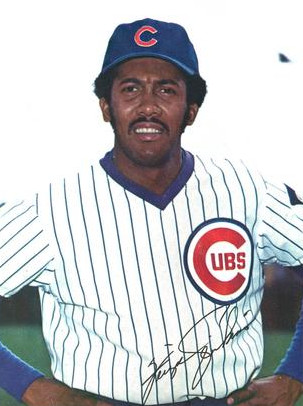
Above: Ferguson Jenkins
In 2020, Larry Walker became the second Canadian inducted into the Hall of Fame.
Walker played right field for the Montréal Expos, Colorado Rockies and the St. Louis Cardinals from 1989 to 2005, winning the National League MVP in 1997 with the Rockies.

The London Tecumsehs were refused admission to the National League in 1877, because they refused to stop playing exhibition games against local teams.
While baseball is widely played in Canada, the American major leagues did not include a Canadian team until 1969, when the Montréal Expos joined the National League.
The team enjoyed a widespread following until about 1994, when the Expos were in first place in the NL East.
After the strike-shortened year, a series of poor management decisions, disputes with the city, and neglect by the ownership caused the Expos to be routinely last in MLB attendance.

In 1977, the Toronto Blue Jays joined the American League.
They later became the first Canadian-based team to win the World Series, winning back-to-back titles in 1992 and 1993.

In 1993, besides the two Canadian major league clubs, Canada hosted four Triple-A teams (the Calgary Cannons: 1985 – 2002, Edmonton Trappers (1981 – 2004), Ottawa Lynx (1993 – 2007) and Vancouver Canadians), one Double-A Ontario team (the London Tigers: 1989 – 1993), two Class A Short Season Ontario teams (the St. Catherines Blue Jays:1986 – 1999 and Welland Pirates: 1989 – 1994) and two rookie-level teams in Alberta (the Lethbridge Mounties / Black Diamonds: 1992 – 1998 and Medicine Hat Blue Jays: 1978 – 2002).



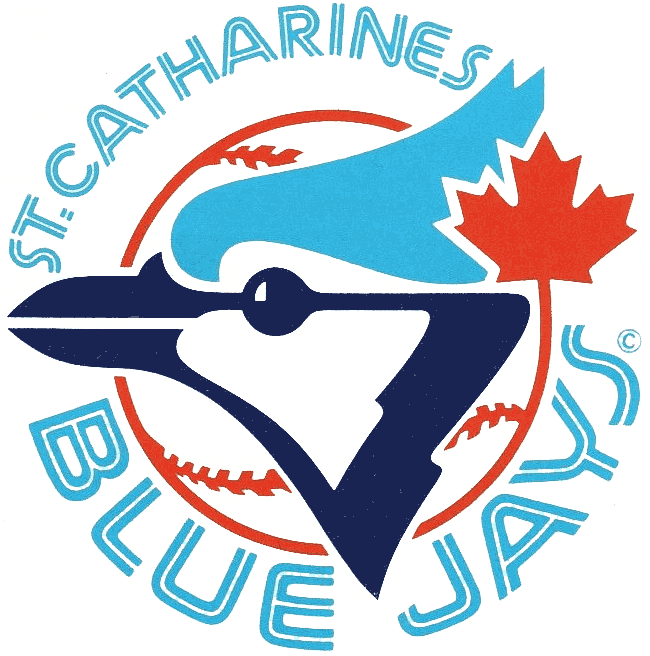

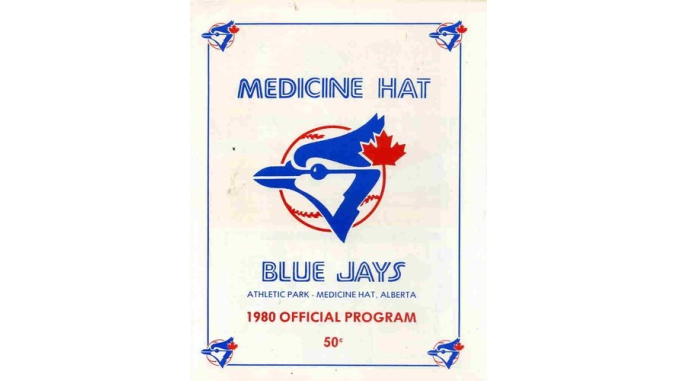
In 2003, an attempt to create the Canadian Baseball League was launched, but the league folded halfway through its first season.

In 2004, the Expos, then owned by MLB itself, moved to Washington, DC and became the Washington Nationals, leaving the Toronto Blue Jays as the only remaining Canadian MLB team.
In the 2010s the sport experienced a surge of popularity.
Whether the 2020s and its pandemic start will affect the popularity of baseball remains to be seen.

The Canadian Baseball Hall of Fame moved to St. Marys from Toronto in 1994 and opened in 1998.
It is dedicated to preserving Canada’s baseball heritage.
Since opening, 75 members (46 players, 23 builders, 2 honorary, 4 honorary teams) have been inducted.
It includes professional ballplayers, amateurs, builders, and honorary members who have helped popularize the sport in Canada.
The facility also includes a baseball field designed by landscape architect Art Lierman of London (ON).
There are thousands of artifacts on display in the museum “including Fergie Jenkins and Larry Walker memorabilia, artifacts from Canada’s two major league franchises, the Toronto Blue Jays and the Montreal Expos, a Babe Ruth collection, a large display on all the current MLB Canadians and a tribute to the Canadian women who played in the All-American Girls Professional Baseball League.”
Dedicated to preserving Canada’s baseball heritage, it includes professional ballplayers, amateurs, builders, and honorary members who have helped popularize the sport in Canada.
The Hall of Fame and Museum is dedicated to preserving Canada’s baseball heritage, which dates back to June 4, 1838, when a game which very closely resembled today’s game of baseball was played in Beachville (ON).

The Hall gained some major attention when Pete Rose became eligible for election for earning his 4,000th MLB hit while playing with the Montréal Expos in 1984.
However, Rose has yet to be elected to the Hall.
(Pete Rose (born April 14, 1941), also known by his nickname “Charlie Hustle“, is an American former professional baseball player and manager.
Rose played in Major League Baseball (MLB) from 1963 to 1986 and managed the Cincinnati Reds from 1984 to 1989.

Rose was a switch hitter and is the all-time MLB leader in hits (4,256), games played (3,562), at-bats (14,053), singles (3,215), and outs (10,328).
He won three World Series rings, three batting titles, one Most Valuable Player Award, two Gold Gloves, and the Rookie of the Year Award, and also made 17 All-Star appearances at an unequaled five positions (second baseman, left fielder, right fielder, third baseman and first baseman).
Rose won both of his Gold Gloves when he was an outfielder, in 1969 and 1970.

In August 1989 (his last year as a manager and three years after retiring as a player), Rose was penalized with permanent ineligibility from baseball amidst accusations that he gambled on baseball games while he played for and managed the Reds.
The charges of wrongdoing included claims that he bet on his own team.
In 1991, the Baseball Hall of Fame formally voted to ban those on the “permanently ineligible” list from induction, after previously excluding such players by informal agreement among voters.
After years of public denial, Rose admitted in 2004 that he bet on baseball and on the Reds.
The issue of Rose’s possible reinstatement and election to the Hall of Fame remains contentious throughout baseball.
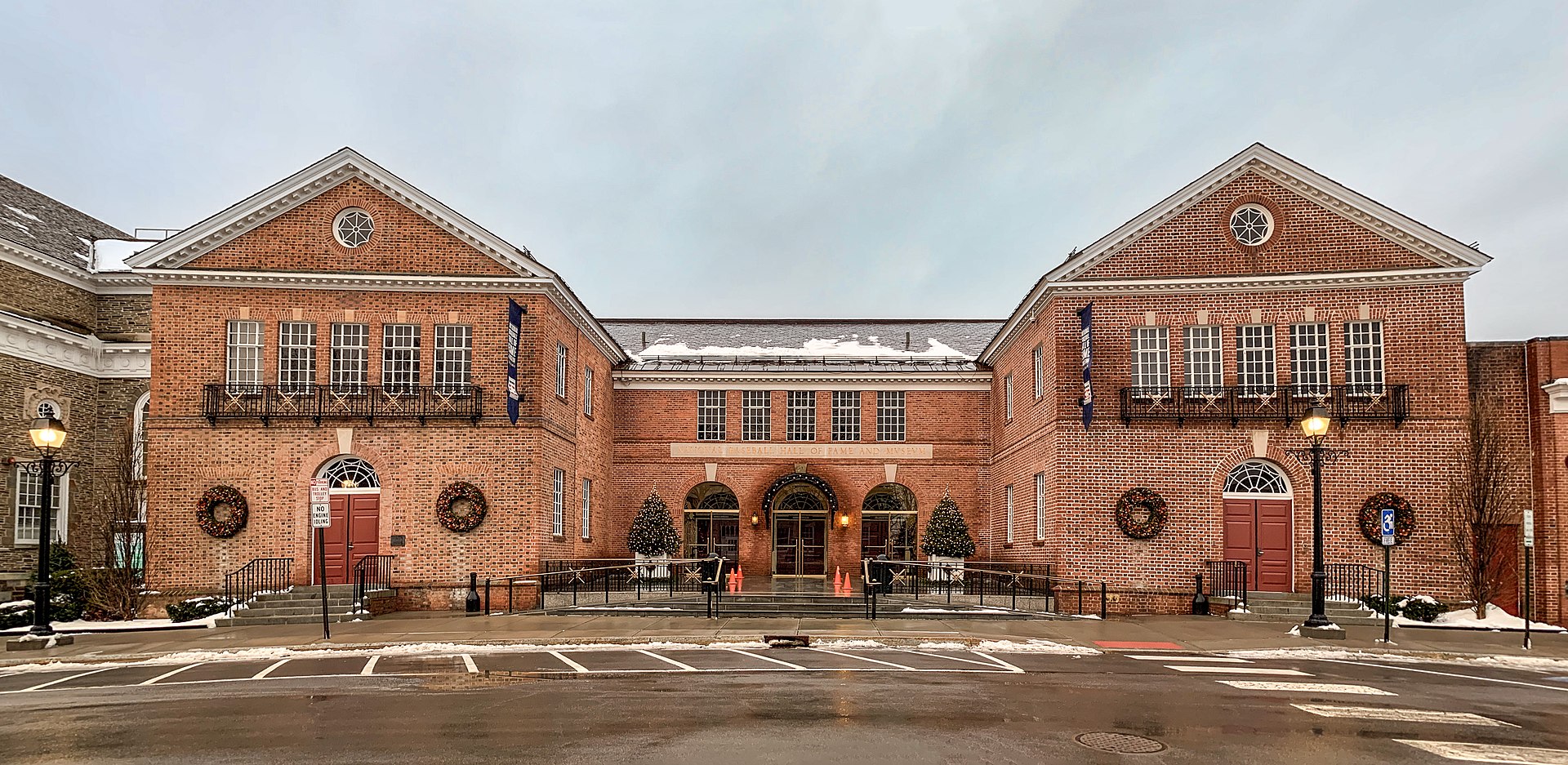
On 22 June 2015, ESPN concluded its own investigation of Rose and determined that he had bet on baseball while still a player–manager.
The results of the investigation were made public and revealed the records of bets that Rose had made on baseball.
US federal authorities had seized the records from one of Rose’s associates.
Rose is the only person to be placed on the ineligible list by mutual agreement.)

The Canadian Baseball Hall of Fame possesses old examples of spectator seats, autographed baseballs, posters and paintings (including one of a giant hot dog hovering over a baseball diamond), exhibition signage replete with statistics, gloves, bats, cleats, jerseys, back issues of baseball magazines, championship rings….
The place is a Who’s Who of baseball, a pantheon of sports divinity:
- Jackie Robinson
- Lloyd Moseby
- Pedro Martinez
- Vladimir Guerrero
- Roy Halliday
- Dennis Martinez
- Tom Cheek
- Carlos Delgado
- Felipe Alou
- George Bell
- Ernie Whitt
- Tommy Lasorda
- Roberto Alomar
- Tom Henke
- Doug Melvin
- Tony Fernandez
- Cito Gaston
- Larry Walker
- Dave Stieb
- Joe Carter
- Sparky Anderson
- Fergie Jenkins
- Babe Ruth
….to name just a few.
The rules of nomination into the Canadian Baseball Hall of Fame are:
- A player must be retired for at least three years.
- Must receive 75% of the vote to be inducted.
- If the person is not Canadian he must have done something significant with respect to baseball in Canada.
- The person nominated will stay on the ballot for nine years as long as he receives a minimum of one vote every two years.
- All information must be in by 1 December of the year to be eligible for the following year.

In addition, the Canadian Baseball Hall of Fame awards the Tip O’Neill Award annually to the Canadian baseball player “judged to have excelled in individual achievement and team contribution while adhering to the highest ideals of the game of baseball” and the Jack Graney Award for Lifetime Media Achievement.

Above: Tip O’Neill (1860 – 1915)

Above: Jack Graney (1886 – 1978)
St. Marys has produced bats, but whether it has bred Hall of Fame-worthy baseball players I am unsure.
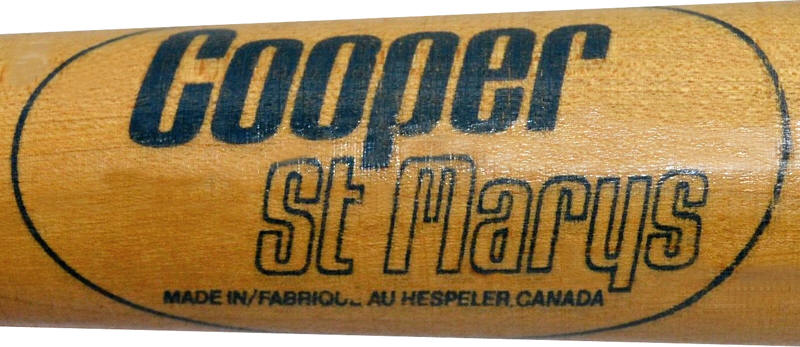
There is more to St. Marys than baseball, but, to be fair, if the Museum brings income to the town than why begrudge baseball for being the primary reason to visit.
St. Marys (population: 7,000) is truly a quaint and hidden gem of a small town.
St. Marys contains many 19th century buildings built with locally quarried limestone.
Notable limestone and brick buildings include:
- the Opera House built in 1880
- the spired municipal Town Hall built in 1891
The Town Hall theatre offers theatrical productions and events.
- the Public Library built in 1904
- St. Marys United Church
- St. James Anglican Church
- St. Marys Presbyterian Church
The Municipal Heritage Committee helps in preserving the historic stone buildings and publishes a useful brochure online, with interesting facts about those in the downtown area.
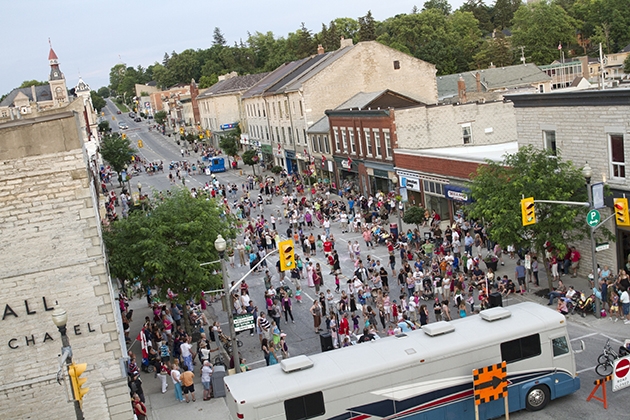
There is a lovely little garden at the back of the Library where folks can read or play chess.
Ducks and fishermen share the Thames River and a path can be followed from one distant bridge to the other on a 13-km Loop Trail.

The Museum and Archives contains a great deal of historical information, with photographs.
Exhibits include a Geneva Bible (1560), a silk and wool shawl that belonged to Laura Secord and a 1902 electric car.

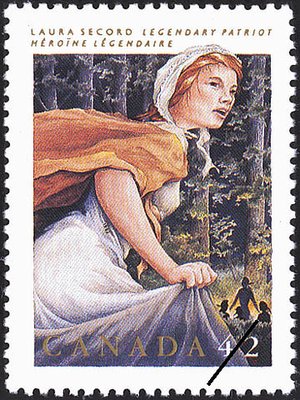

(The Geneva Bible is one of the most historically significant translations of the Bible into English, preceding the King James Version by 51 years.

It was the primary Bible of 16th-century English Protestantism and was used by William Shakespeare (1564 – 1616), Oliver Cromwell, John Knox (1514 – 1572), John Donne (1572 – 1631), and John Bunyan (1628 – 1688), author of The Pilgrim’s Progress (1678).

It was one of the Bibles taken to America on the Mayflower.
(Pilgrim Hall Museum in Plymouth, Massachusetts, has collected several Bibles of Mayflower passengers.)

The Geneva Bible was used by many English Dissenters, and it was still respected by Oliver Cromwell’s soldiers at the time of the English Civil War, in the booklet “Cromwell’s Soldiers’ Pocket Bible“.
This version of the Bible is significant because, for the first time, a mechanically printed, mass-produced Bible was made available directly to the general public which came with a variety of scriptural study guides and aids (collectively called an apparatus), which included verse citations that allow the reader to cross-reference one verse with numerous relevant verses in the rest of the Bible, introductions to each book of the Bible that acted to summarize all of the material that each book would cover, maps, tables, woodcut illustrations and indices.
Because the language of the Geneva Bible was more forceful and vigorous, most readers strongly preferred this version to the previous version, the Great Bible.
In the words of Cleland Boyd McAfee:
“It drove the Great Bible off the field by sheer power of excellence“.)

St Marys Junction stone station is the only original Grand Trunk station in southwestern Ontario.
Although a National Historic Site, the station had been fenced off and neglected for a long time but is now slowly being restored.
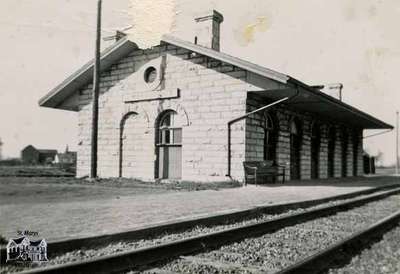
The Grand Trunk Trail is a paved walkway, with wooden railway ties as steps, transformed from a 3.2 km long section of the former abandoned Grand Trunk Railway line.
The former railway bridge over the Thames River is beautiful.
In 2012, the re-purposing of the Sarnia Bridge as part of the Grand Trunk Trail was inducted to the North America Railway Hall of Fame.
The bridge was inducted in the “Community, Business, Government or Organization” class in the “National” category.

Also in the area, there are four ballfields, including the St. Marys Cement Company Field, Rotary Field, King Field and 3rd Field.
All these fields were constructed between 1998 and 2014.
Over 900 events are held on site each year, including Major League Baseball tryout camps and World Junior Championship exhibition games.

The Wildwood Dam is a dam located on Trout Creek, upstream of the Town of St. Marys.

The Quarries consist of two former limestone quarries located in southern St. Marys, one of which has been rehabilitated as an outdoor swimming pool.
The area became a popular swimming spot with locals after filling with water between 1930 and 1935.
In 1945 the town bought the quarries along with 50 acres (200,000 m2) of surrounding land, and now manages it as a public recreational facility.
The quarry is Canada’s largest outdoor swimming pool – 500 yards by 100.

By the Thames is the Peace Garden where every tree, every bench, is dedicated to the memory of someone beloved.
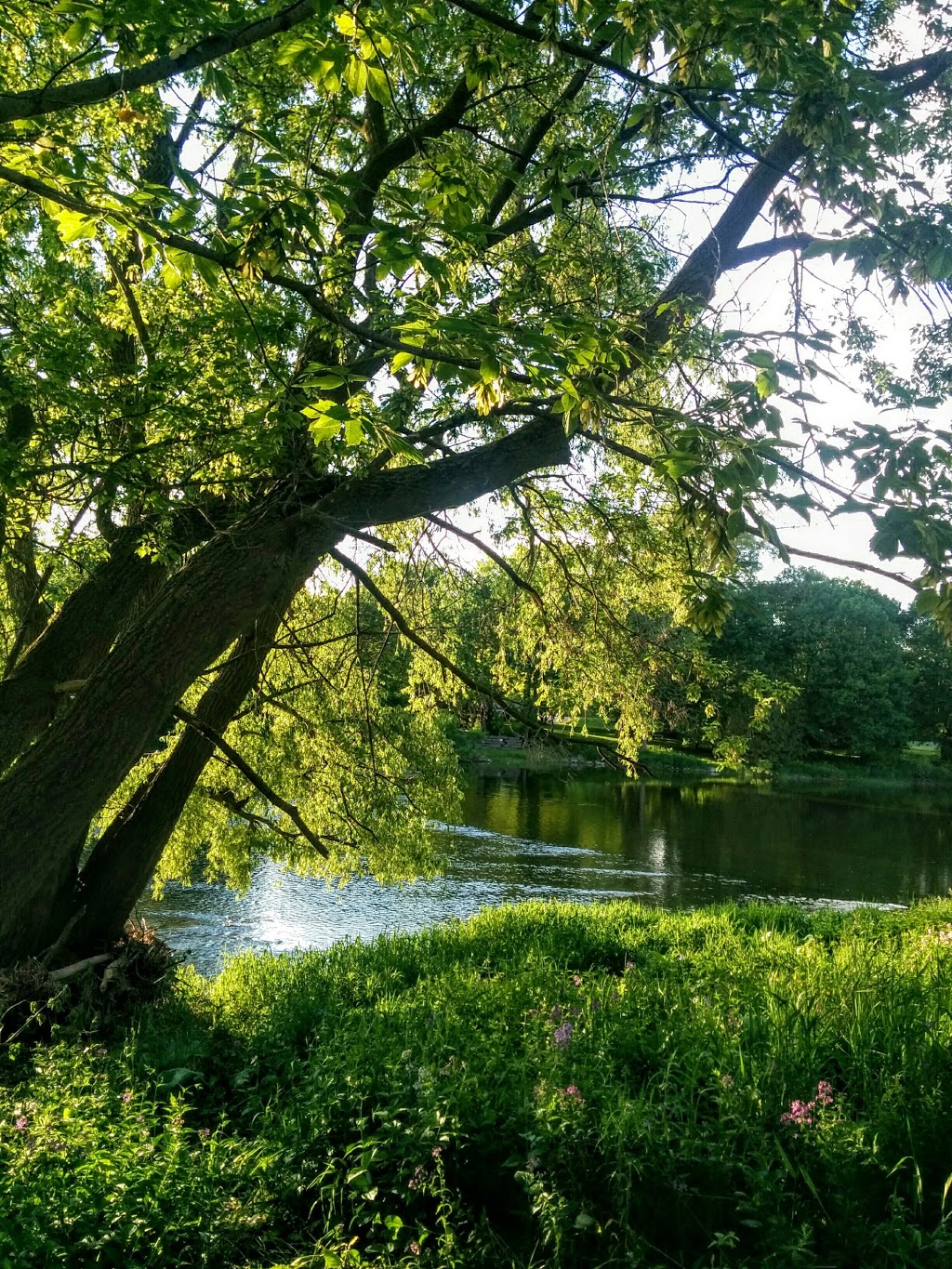
St. Marys is an ideal town for wandering, for wondering one’s place in the world, a feeling of Fado, of bittersweet Saudade, in the silence of snow or the warmth of summer winds, a weekend retreat, a quiet place to retire, or a home to raise a family.
This is the epitome of small town Canada, a place where Stephen Leacock (1869 – 1944) could easily have transposed his Mariposa Sunshine Sketches of a Little Town from Orillia to here.

Well, I was born in a small town
And I live in a small town
Probably die in a small town
Oh, those small communities
All my friends are so small town
My parents live in the same small town
My job is so small town
Provides little opportunity
Educated in a small town
Taught the fear of Jesus in a small town
Used to daydream in that small town
Another boring romantic, that’s me
But I’ve seen it all in a small town
Had myself a ball in a small town
Married an L.A. doll and brought her to this small town
Now she’s small town just like me
No, I cannot forget where it is that I come from
I cannot forget the people who love me
Yeah, I can be myself here in this small town
And people let me be just what I want to be
Got nothing against a big town
Still hayseed enough to say
Look, who’s in the big town
But my bed is in a small town
Oh, and that’s good enough for me
Well, I was born in a small town
And I can breathe in a small town
Gonna die in this small town
And that’s probably where they’ll bury me
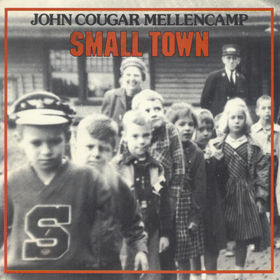
St. Marys is the burial place of Arthur Meighen (1874 – 1960), Canada’s 9th Prime Minister (July 1920 – December 1921 / June to September 1926).
Canada Post issued a memorial stamp featuring Meighen on 19 April 1961.
That same year, Meighen was designated a National Historic Person by the Historic Sites and Monuments Board.
Landmarks named after Meighen include:
- École Arthur Meighen School, in Portage la Prairie, Manitoba.
- Arthur Meighen Public School in St. Marys. The school closed permanently in 2010.
- Mount Arthur Meighen, a 3,205-metre (10,515 ft) peak located in the Premier Range of the Cariboo Mountains in the east-central interior of British Columbia, south of the head of the McClennan River and immediately west of the town of Valemount.
- Meighen Island in northwestern Nunavat
- The Arthur Meighen Library at Toronto’s Albany Club
- The Arthur Meighen Gardens, at the entrance to the Festival Theatre in Stratford
- The Arthur Meighen Building at 25 St. Clair Avenue East in Toronto, a Government of Canada Building built in the 1950s.
Larry A. Glassford, a professor of education at the University of Windsor, concluded:
“On any list of Canadian Prime Ministers ranked according to their achievements while in office, Arthur Meighen would not place very high.”
In his first term as Prime Minister his actions in implementing conscription hurt his party’s already-weak support in Quebec, while the Winnipeg General Strike and farm tariffs made him unpopular among labour and farmers alike.
His second term, appointed by the Governor General as no one else would take the job, still found him vastly unpopular both in Québec and in the West, which resulted in him losing the subsequent election.

Above: Arthur Meighen
Beyond baseball and a semi-successful Prime Minister there still are noteworthy personalities connected with St. Marys:

Nora Clench, Lady Streeton (1867 – 1938) was a Canadian violinist.

Born Esther Leonora Clench in St. Marys, the daughter of L.M. Clench, Clench attended Loretto Convent in Hamilton (ON).
Her father made a violin for her at the age of five and she quickly became known as a musical child prodigy.
She began touring and performing in Canada and the United States at eight years old.
When she was fifteen she entered the Leipzig Conservatory in Germany, where she was a pupil of Adolph Brodsky, the Russian violinist.
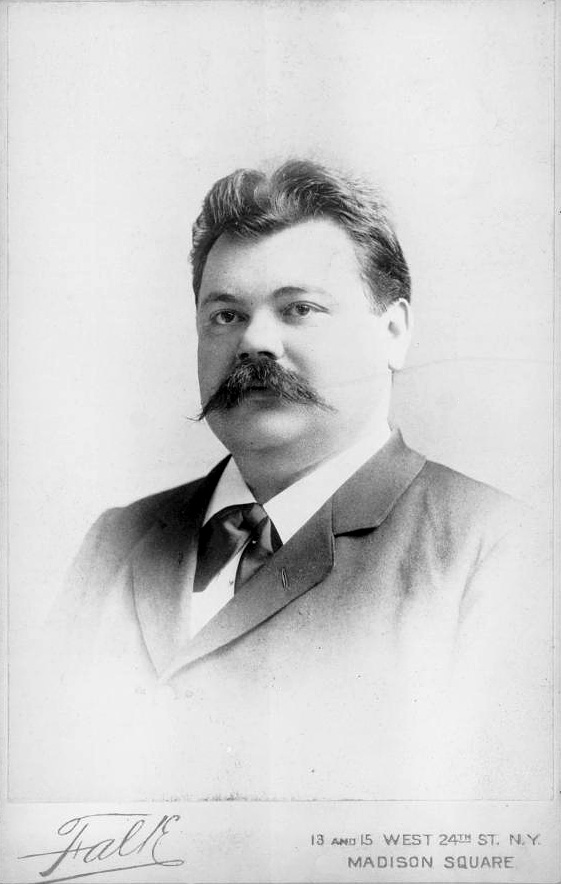
Above: Adolph Brodsky (1851 – 1929)
Upon graduation, she was awarded with a prize for her musicianship and skill.
The prize was not annually awarded, but rather reserved for musicians who were especially deserving.

Above: The University of Music and Theatre “Felix Mendelssohn Bartholdy“, the former Leipzig Conservatory
After graduating in 1889, she made her professional debut at the Academy of Music in Toronto.
This was a momentous performance, as it was also the inaugural performance of the institution’s new theater.
She headlined the performance, which also included Fannie Bloomfield-Zeisler, an American pianist, and two other Canadians, contralto Moran Wyman and tenor Whitney Mockridge.
Not long after, she became first violinist and leader of an orchestra in Buffalo (NY).

Above: Fannie Zeisler (1863 – 1927)
She also toured in Europe and moved to London (UK).
In 1893 she was invited to perform for Queen Victoria in Osborne.
She was awarded with a diamond and a ruby brooch by the queen for her performance.

Above: Queen Victoria (1819 – 1901)
She chose to continue training in 1895, this time with Joseph Joachim in Berlin, with whom, by her own account, she benefited greatly and grew as a musician thanks to his skilled teaching.
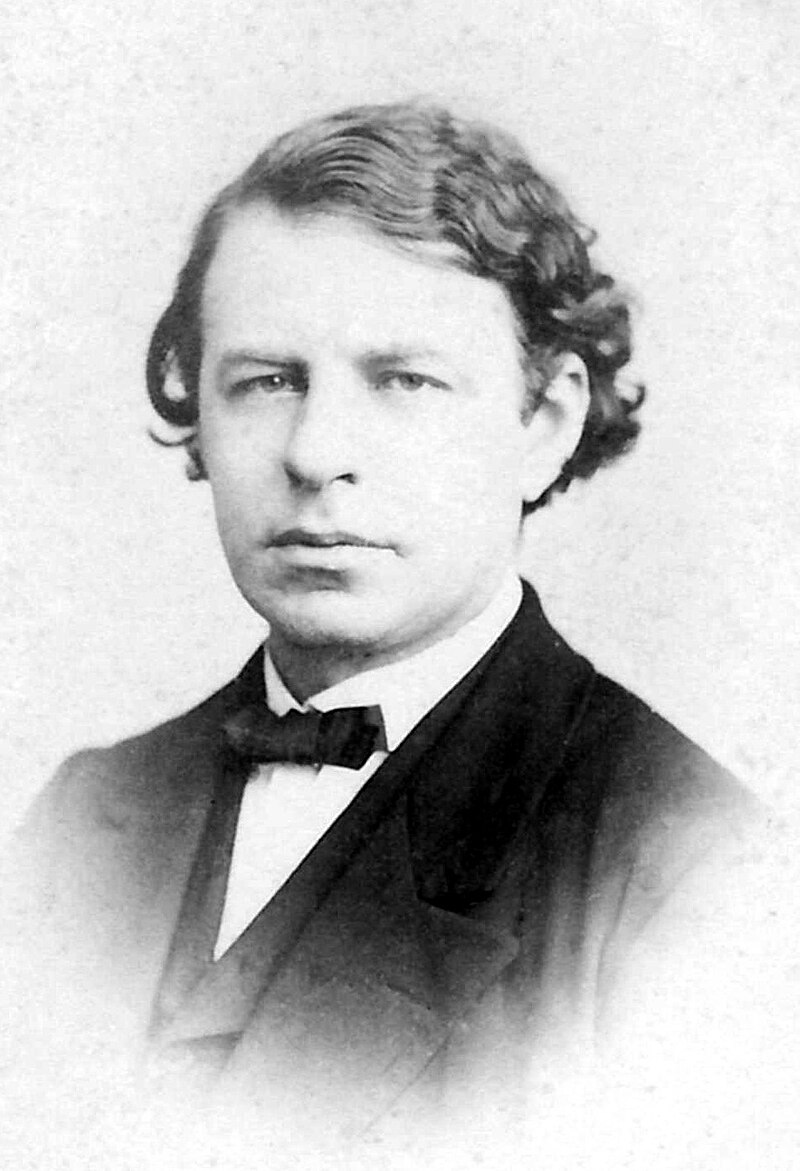
Above: Joseph Joachim (1831 – 1907)
She continued to tour and perform until 1900 (the year after she met Australian painter Arthur Streeton, who was almost completely unknown at the time they met) and began focusing on painting instead.

Above: Arthur Streeton (1867 – 1943)
This hiatus was brief, as she began performing again in 1903, and formed the Nora Clench Quartet in 1904 with Lucy Stone as second violin, Cecilia Gates on viola, and May Mukle on cello.
Their first concert in June 1904 included works by Wolfgang Amadeus Mozart (1756 – 1791) and Alexander Borodin (1833-1887).

Above: May Murkle (1880 – 1963)
The Nora Clench Quartet only lasted a few years, but in that time it received high praise for its performances.
The Violin Times offered high praise for the quartet in its premiere performances that took place in January of that year at London’s Aeolian Hall, stating that their interpretation and expression of Hugo Wolf’s quartet in D minor was admirable.
The same Times article illustrated how Clench continued performing as a soloist as well, playing a violin sonata together with Percy Grainger on the piano.
Though the quartet was appreciated, its final performances came in 1907, as documented by the Violin Times.
These performances included quartets from Mozart, Schumann, and the premiere of Max Reger’s Quartet in D minor.
These final performances were also praised, with the Times describing a large and appreciative audience in attendance.

Nora Clench retired in 1908 when she married Arthur Streeton.
Three years later, their son Charles Ludwig Oliver Streeton was born.
At the time of the marriage, Clench was still held high renown, while her new husband was still relatively unknown as an artist.
Over the course of the ensuing years, this began to change.
By the time they moved to Australia in 1924, she was almost completely unknown, while Streeton gained greater renown.
His growing fame ultimately led to knighthood in 1937, giving her the title of Lady Streeton.
By the time she died in Toorak, Victoria, Australia in 1938, she was known only for her relationship to Streeton among their contemporaries.
Above: Clench Home, St. Marys
Rapley Holmes (1867 – 1928) was a stage and screen actor.

Above: Still from the American comedy film Nothing But Lies (1920) with (left to right) Justine Johnstone, Rapley Holmes, Taylor Holmes, and Gypsy O’Brien
He was born in St. Marys and married actress Gerda Holmes (1891 – 1943).

Above: Gerda Holmes (née Gerda Henius)
Holmes played the part of Joe Horn in the long running Somerset Maugham (1874 – 1965) play Rain (1922) starring Jeanne Eagels (1890 – 1929).
On stage he appeared with many greats of the Edwardian era including Maxine Elliott (1868-1940), Elsie Ferguson (1883 – 1961), Nance O’Neil (1874 – 1965), Douglas Fairbanks (1883 – 1939) and both William (1876 – 1953) and Dustin Farnum (1874 – 1929).

Holmes began appearing in silent films in 1914 while still maintaining an active role in Broadway plays.
His last film role was in 1920, two years before the huge hit of Rain.
Acting in Rain dominated the rest of Holmes’s career up until his death in January 1928.
His role in Rain was played by James A. Marcus (1867 – 1937) in the 1928 Gloria Swanson (1899 – 1983) hit re-titled Sadie Thompson and by Guy Kibbee (1882 – 1956) in the 1932 talkie Rain with Joan Crawford (d. 1977).

Above: Holmes (right) with Justine Johnstone (1895 – 1982) and Taylor Holmes (1878 – 1959) in Nothing But Lies, 1920
John Graham Lake (1870 – 1935) was a Canadian leader in the Pentecostal movement that began in the early 20th century, and is known as a faith healer, missionary and, with Thomas Hezmalhalch (1847 – 1934), founder of the Apostolic Faith Mission of South Africa.

Through his 1908 – 1919 African missionary work, Lake played a decisive role in the spread of Pentecostalism in South Africa, the most successful southern African religious movement of the 20th century.
After completing his missionary work in Africa, Lake evangelized for 20 years, primarily along the west coast of the United States setting up “healing rooms” and healing campaigns, and establishing churches.
Lake was influenced by the healing ministry of John Alexander Dowie and the ministry of Charles Parham.
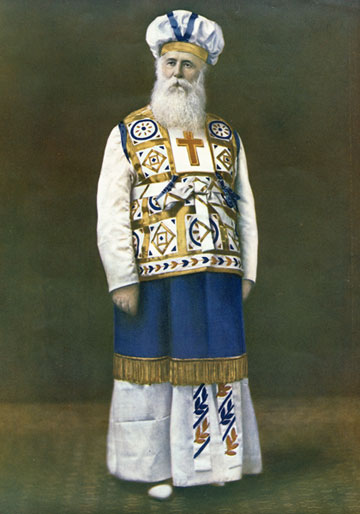
Above: John Alexander Dowie (1847 – 1907)
Lake was born in St. Marys and moved to Sault Ste. Marie, Michigan with his family in 1886.
He was born into a large family of 16 siblings (eight of whom died young).
He graduated from high school in St Mary’s shortly before the move to Michigan and claimed to have been ordained into the Methodist ministry at the age of 21.
However, his seminary attendance has never been confirmed and census records cannot confirm even ten years’ education.
Lake, then, may have had no formal theological training.

Lake moved to Harvey, a Chicago suburb, in 1890, where he worked as a roofer and construction worker before returning to his hometown in 1896.
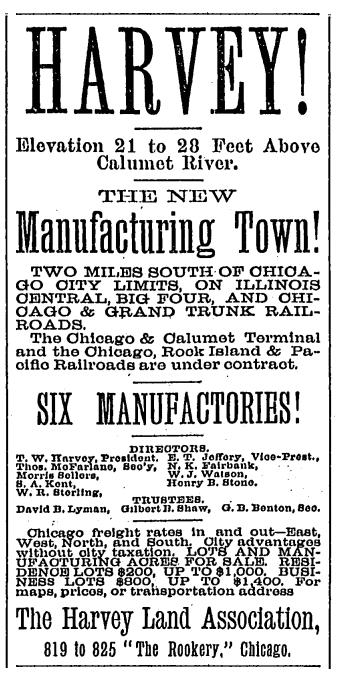
According to Lake, he became an industrious businessman and started two newspapers, the Harvey Citizen and the Soo Times in Sault Ste. Marie, before beginning a successful career in real estate, and later, becoming a millionaire in life insurance dealings.
Historian Barry Morton found no evidence that Lake ever owned the two newspapers, citing sources which indicate the Harvey Citizen was founded by the Harvey township and the Soo Times was started by George A. Ferris and owned by Ferris & Scott Publishers.

Morton further alleges that Lake exaggerated his business career, and that “clear evidence” shows Lake instead worked as a small-scale contractor, roofer and “house-flipper“.
In the 1900 Census, Lake’s occupation is listed as “carpenter“.
In February 1893, Lake married Jennie Stevens of Newberry, Michigan, and the two had six children and adopted another before her death in 1908.
During the 1890s, Lake and many members of his family began appearing regularly in Dowie’s services, where they were invariably healed and allegedly brought back from death’s door.
In 1898, Lake opened a small chapter of Dowie’s Christian Catholic Church in Sault Ste Marie and held meetings in the attic of his parents’ home.
In 1901, he relocated his family to Zion, Illinois, where he worked in the theocratic town’s construction department.

After massive retrenchments affected ever-bankrupt Zion City, Lake found new employment around 1905.
He later claimed that he maintained relationships with many of the leading figures of his day including railroad tycoon James Jerome Hill (1838 – 1916), Cecil Rhodes (1853 – 1902), Mahatma Gandhi, Arthur Conan Doyle (1859 – 1930) and others.
When he began his preaching career he claimed to have walked away from a $50,000 year salary (around $1.25 million in 2007 US dollars), as well as his seat on the Chicago Board of Trade.

Lake’s biographer, Burpeau, reported no evidence outside of Lake’s own assertions that Lake was connected to these wealthy financiers and industrialists.
According to Morton, contemporary records show Lake never left Zion City at the time Lake was said to be making his name in Chicago.
He instead worked in nearby Waukegan as an “ordinary, small-town insurance salesman“.

Above: Modern skyline of Waukegan
Lake does not appear in contemporary newspapers until 1907 where he gave an account of his experience of speaking in tongues.
In 1907, Lake was converted to Pentecostalism when Charles Parham (1873 – 1929) staged a tent revival in Zion in an attempt to woo Dowie’s supporters.

Above: Charles Parham
After Parham’s departure a group of several hundred “Parhamites” remained in Zion, led by Thomas Hezmalhalch — a recent arrival from the Azusa Street Revival.

Above: The Apostolic Faith Mission on Azusa Street, now considered to be the birthplace of Pentecostalism
As 1907 wore on, Lake grew in stature among this group, and was usually listed as co-leader.
After Parham’s arrest for (unsubstantiated) reports of sodomy and pedophilia in the summer of 1907, the Parhamites descended into disorganization.
It is rumoured that believing that many had been possessed by demons, a number of brutal exorcisms began, in which at least two deaths occurred.
In the face of arrests and potential mob violence, the Parhamites were forced to flee en masse from Illinois.
Lake and Hezmalhalch left for Indianapolis.
Once there, they raised $2,000 to finance a Pentecostal mission to South Africa.
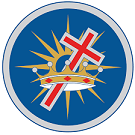
Above: Logo for Apostolic Faith Mission of South Africa
With Hezmalhalch, Lake founded the Apostolic Faith Mission of South Africa (AFM) in 1908 and carried on missionary work from 1908 to 1913.
Lake and Hezmalhalch would appear to be the first Pentecostal missionaries to South Africa and introduced speaking in tongues.
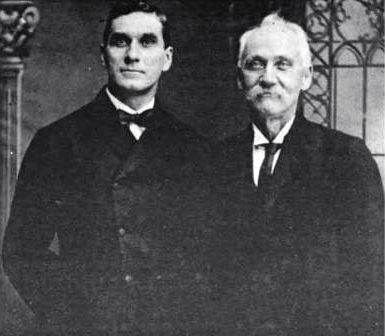
Above: John G. Lake and Thomas Hezmalhalch
Many of those who joined their church had previously been Zionists allied to Dowie’s organization who believed in faith healing.
Morton wrote in 2012:
“Lake was instrumental in spreading this fusion of Zionism/Pentecotalismas that is unique to southern Africa.
About half of southern African Christians today are adherents of it.
Lake played a decisive role in the spreading of this ‘second evangelization‘.”
Lake’s movement attracted many of the early Zionists led by Pieter L. Le Roux of Wakkerstroom.
It is rumoured that due to the segregationist impulses of the AFM’s white membership, the majority of its African members eventually seceded, forming many different Zionist Christian sects.

Just six months after Lake’s arrival in South Africa, his first wife, Jennie, died on 22 December 1908.
He referred to the death of his wife as “Satan’s master stroke”.
He continued his work in Africa for another four years, raising his seven children with the help of his sister Irene.
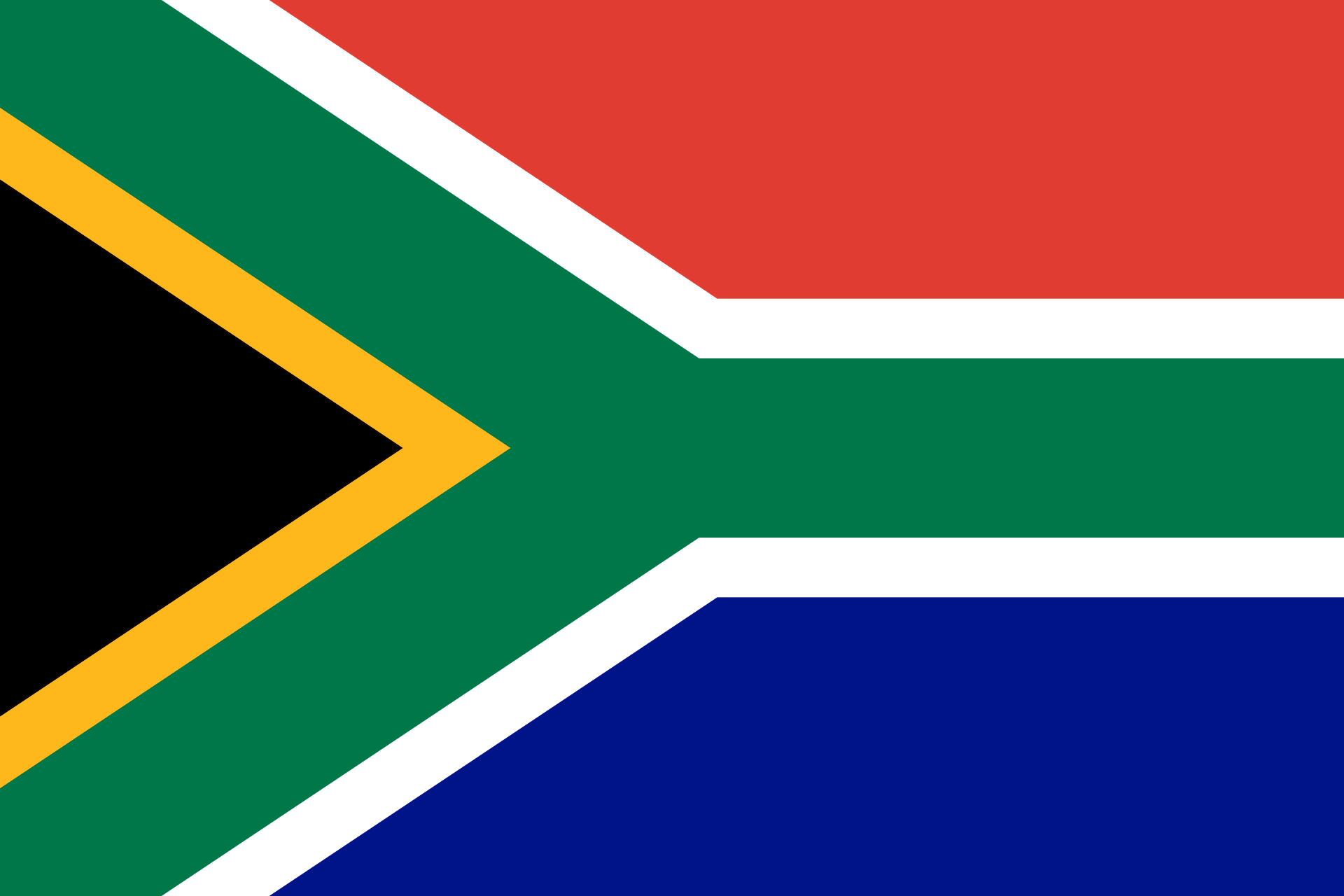
Above: Modern flag of South Africa
Lake’s ministry in South Africa was not without controversy.
Morton wrote that Lake was accused of misappropriating the AFM’s funds, particularly that funds did not flow to poor rural areas but was eventually disproved.
The healings that occurred under his ministry were documented thoroughly.
He also wrote that “an analysis of the missionary that was full of blatant lies.”
Marius Nel takes a different position, and mentions a “seemingly preconceived notion of Lake as a fraud and scam, supported by an unbalanced utilisation and unfair treatment of resources“.
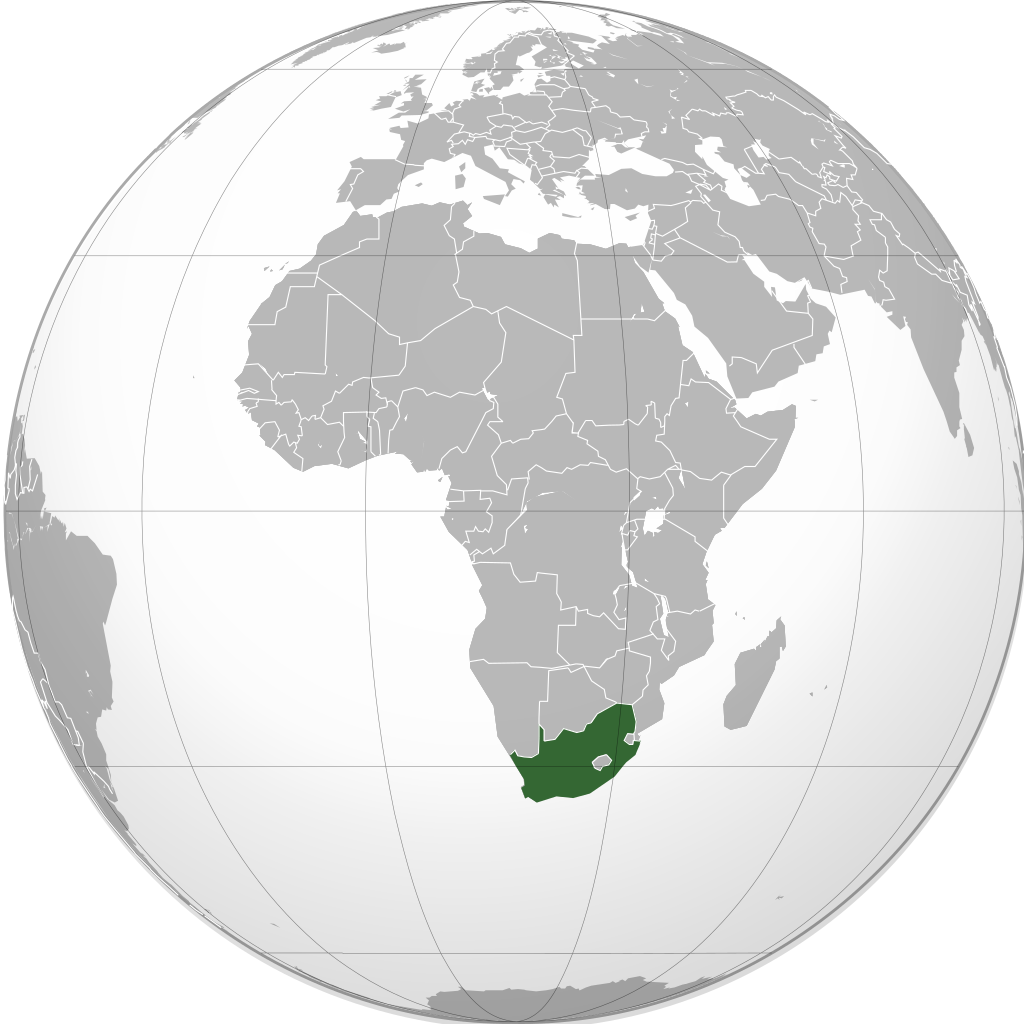
Lake returned to America on 1 February 1913 and married Florence Switzer in September 1913.
Lake’s alleged comment on this second marriage was:
“Men these days consider themselves to be happily married once.
I have been especially blessed in that I have been happily married twice.”
From this marriage five children were born.
After a year of itinerant preaching, Lake relocated to Spokane (WA) by July 1914 and began ministering in “The Church of Truth“.
He started an organization called The Divine Healing Institute and opened what he called “Lake’s Divine Healing Rooms“.
Lake ran the “healing rooms” from 1915 until May 1920, at which time he moved to Portland (OR), for a similar ministry that lasted for another five years.
He continued to found churches and “healing rooms” down the California coast and eventually to Houston (TX) in 1927, before finally returning to Spokane in 1931.
Upon his return to Spokane he purchased an old church and began his final church and healing room.

In 1935, Lake suffered a serious stroke and died on 16 September 1935 at age 65.

William Milton “Riley” Hern (1878 – 1929) was a St. Marys-born professional ice hockey goaltender, the first professional goaltender to play on a Stanley Cup-winning team.

Hern began playing ice hockey at an early age, playing for school teams in St. Marys and Stratford (ON), playing both as a goaltender and a forward.
Hern played for the Stratford Legionnaires from 1898 to 1901.
He began his professional career with the Pittsburgh Keystones of the Western Pennsylvania Hockey League (WPHL) during the 1901 – 1902 season.
In his first season, Hern led the league in victories, with nine in 14 games.
Hern, as a result, was named to the WPHL All-Star Team.
However, in the next season, he led the league in losses, losing 10 out of 11 games.

In the 1904 – 1905 season, Hern played with the Portage Lakes Hockey Club of the International Professional Hockey League (IPHL).
He played, in total, three seasons with Portage Lakes.
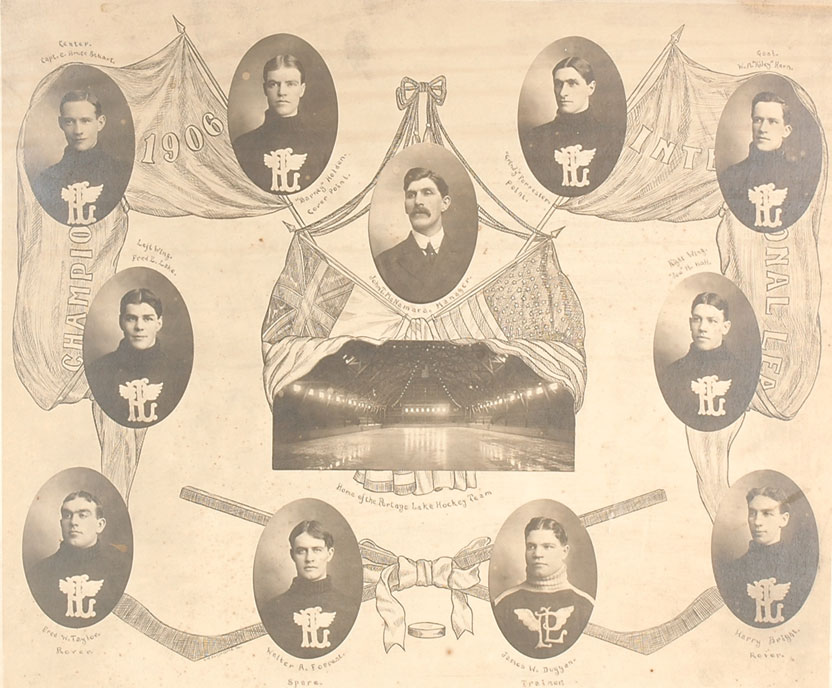
In the 1906–1907 season, Hern joined the Montréal Wanderers of the Eastern Canadian Amateur Hockey Association (ECAHA).
Hern posted a 10–0 regular season record in his first season with the Wanderers.
The Wanderers won the Stanley Cup four times, three straight seasons, from 1906 to 1908, and in 1910.
The Wanderers also successfully defended the Cup in six out of seven challenges in that time span.
The only challenge they lost was against the Kenora Thistles in January 1907.
The Wanderers reclaimed the Cup in their own successful challenge two months later.

Hern retired from playing professional ice hockey in 1911, at the age of 30.
Hern went on to become a successful businessman, owning a haberdashery in Montréal.
He was involved in organizing various ice hockey leagues and printing schedules.
Hern also served as an NHL referee and a goal judge.

Hern died at Ross Memorial Pavilion of a heart ailment that had been ailing him for six weeks on 24 June 24, 1929.
He was inducted posthumously into the Hockey Hall of Fame in 1963.

Hern’s grandson is Allan F. Nicholls, who played the role of Charlestown Chiefs captain Johnny Upton in the 1977 film Slap Shot.

Riley Hern is regarded by some as being among the best goaltenders of all time, coming in at 25th overall according to veteran hockey writers Kevin Allen and Bob Duff in their 2002 book Without Fear: Hockey’s 50 Greatest Goaltenders.

Kate Rice (1882 – 1963) was a Canadian prospector, adventurer, and writer from St. Marys who homesteaded, prospected and mined in northern Manitoba.
She garnered widespread attention for her adventurous life, brilliant mind, statuesque beauty, and for succeeding in the mineral industry, which very few women were engaged with at the time.

Kathleen Creighton Starr Rice was born in 1882 to Henry Lincoln Rice (1857 – 1933) and Charlotte “Lottie” Carter Rice (1862-1941), an upper-middle-class family in St. Marys.
Her father struggled with the changing business climate as a grain merchant who had inherited full shares in Carter Milling Co. on the death of his father-in-law, founder George Carter (1826-1899), who was a native of Tipperary, Ireland.
Her paternal grandfather, Rev. Dr. Samuel Dwight Rice (1815 – 1884), was a progressive Methodist Minister who had founded a college for women in Hamilton.
H.L. Rice taught his daughter to canoe and to camp along the St. Marys River, at the age of six, regaled her with tales of Daniel Boone, and imparted a life-long taste for adventure and the outdoors.

Above: Daniel Boone (1734 – 1820)
Rice attended the University of Toronto, winning the Edward Blake Scholarship twice.

She studied Mathematics, Physics and Astronomy, graduating in 1906.

Above: Logo of the University of Toronto
In 1908, Rice moved west to Tees, Alberta, where she taught at a summer school.
She then took a position as a Professor of Mathematics at Albert College in Belleville (ON).
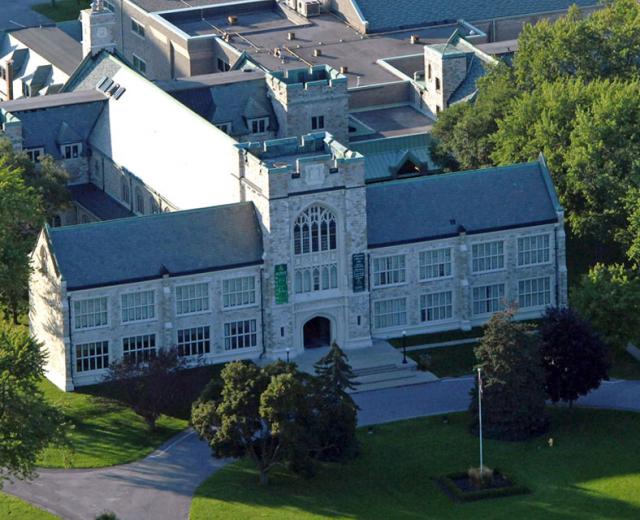
Above: Albert College, Belleville
Then she taught in Yorkton, Saskatchewan during 1911 and 1912.

She there began to explore the Canadian Rockies and took up mountaineering, mainly in the Cascade Mountains.
This became her passion and she later joined the Alpine Club of Canada.
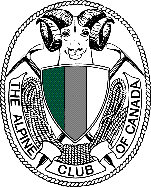
At the age of 29, Rice decided she wanted to homestead and to participate in the opening of Canada’s “new frontier” in the North.
Since, until 1929, women were not considered legal persons in Canada, and so were prevented from owning property or holding legal title to homesteads, Rice enlisted her brother, Lincoln, to purchase 6 km (3.7 mi) for her, in his name, north of The Pas, Manitoba.
Rice began to farm in 1913.

Soon after Rice moved to The Pas, there was word of gold being discovered 90 km (56 mi) north on beaver Lake.
Rice began studying prospecting and read everything she found on geology.
She befriended local Cree, learned their language and to hunt and trap animals.

In 1914, Rice borrowed money, a “grubstake“, from an old college friend, and hired a Cree guide to take her north to Beaver Lake by dogsled.

She then travelled further north by canoe to Brochet to begin prospecting.

On this first foray, Rice discovered zinc showings at Reindeer Lake but did not stake the claim as there was no railway to the area and it would be difficult to develop.

In 1915, she took her own dog team to explore the Beaver Lake area where she went on to stake her first claims.
During this time Rice hired “Old Isaac” a local Cree Elder, to teach her how to trap, hunt, mush dogs, and shoot.
The local Cree called her “Mooniasquao” (“white woman“).

The following year, Rice entered into a partnership with Richard “Dick” Woosey.
Woosey was a veteran of the British 18th Royal Hussars Regiment who had fought in the Boer War, in India and along the Afghan border.

The two built a remote cabin together and worked as a team until Woosey’s death in 1940.
While there was frequent speculation about their personal relationship, Rice always insisted it was strictly professional.
In 1917, Rice staked more claims at Herb Lake and had them surveyed, proved, and assessed.
For several decades afterward, Rice prospected the Wekusko Lake, Herb Lake, and Snow Lake areas, as well as in the Burntwood and Flin Flon mineral belts.

In 1928, Rice visited Toronto, where she began to garner media attention as “a most picturesque feminine visitor” who was making a name for herself in the notoriously rugged world of northern trapping and prospecting.
(Rice was hard to overlook, standing six feet tall with golden blonde hair bobbed around a brilliant mind.)
For years afterwards, the Toronto Star would hound her while she was on her regular visits south to see her parents and international papers as far away as Australia would regularly record her exploits.
Rice occasionally wrote well-received articles for the Toronto Star about topics of more interest to her than to tabloid journalism.

Rice was once offered $500,000 for one of her claims, but decided to hold out for twice that amount.
Unfortunately, the buyer eventually walked away and she was only able to sell it for $20,000 to International Nickel (INCO).

Rice and Woosey were later sued by C. E. Hermann, a former associate, for breach of contract involving another claim that was valued (for a time) at $5 million.
Her many copper and nickel discoveries ultimately led to the development of large mining operations and the creation of the mining hub of Thompson, Manitoba.

Above: Modern Thompson
From 1940 onwards Rice lived in her log cabin on her island on Wekusko Lake, writing, gardening, fishing, trapping and prospecting in her small 12 ft canvas canoe “Duckling“.
She wrote several articles in scientific journals about meteorological and astronomical observations she had made in her travels through Canada’s north.
She became well known, as well, for her ability to raise and train sled dogs, and for her skill in mushing them without resorting to the use of a whip.

After so many years living in isolation on her island, Rice became worried for her own sanity.
She left the wilderness in 1960 at the age of 77 to check into the Brandon Mental Institution.
After examination, the doctors assured her she was not crazy, but rather was “just a prospector“.
Nonetheless, in 1962 Rice moved herself into a nursing home in Minnedosa, Manitoba, where she died a year later.
Penniless in the end, she was buried in an unmarked grave.

Above: Minnedosa Dominion Post Office
The island upon which Rice lived on Wekusko Lake was officially recognized as Rice Island in 1946.
In 2013 a plaque was installed on the island that read:
“In Memory of Kathleen ‘Kate’ Rice.
With the aurora borealis illuminating her pioneering trail, her courage and ethics spoke volumes, while her deeds and prospecting helped define the North we know.“
In 2009, the Snow Lake newspaper, Underground Press, spearheaded a fundraising campaign to erect a headstone on Rice’s grave in Minnedosa which read:
“Prospector and Pioneer of the North, Extraordinary Woman of the Wilds“.
A similar stone was erected in The Pas on Dick Woosey’s grave.
The Canadian Mining Hall of Fame (University of Toronto and in Elliot Lake) inducted Kate Rice in 2013.
A relative donated Rice’s papers, including an unpublished memoir and drawings, to the University of Manitoba Archives.

St. Marys is, like anywhere, filled with heroes and villains: a world pianist, an actor, a religious grifter, a goaltender, a prospector, and average folks like you and me.
The snow at the station is tossed about like confetti after a wedding.
Folks are bundled tight against the relentless wind and the town of St. Marys beckons, promising nothing, suggesting everything.
Seeing a small town station saddens me.
Few of the famous commemorated stayed.
St. Marys is another Lachute, another Napanee, another St. Thomas, another Landschlacht.
I want to stay.
I want to go.
Truth faced leaves a strange taste
When joy and sadness meet.

Sources: Wikipedia / Google / Readers Digest Explore Canada / U2, “Sunday Bloody Sunday” / Cesaira Evora, “Sondade” / Moxy Früvous, “Bittersweet” / John Mellancamp, “Small Town”
